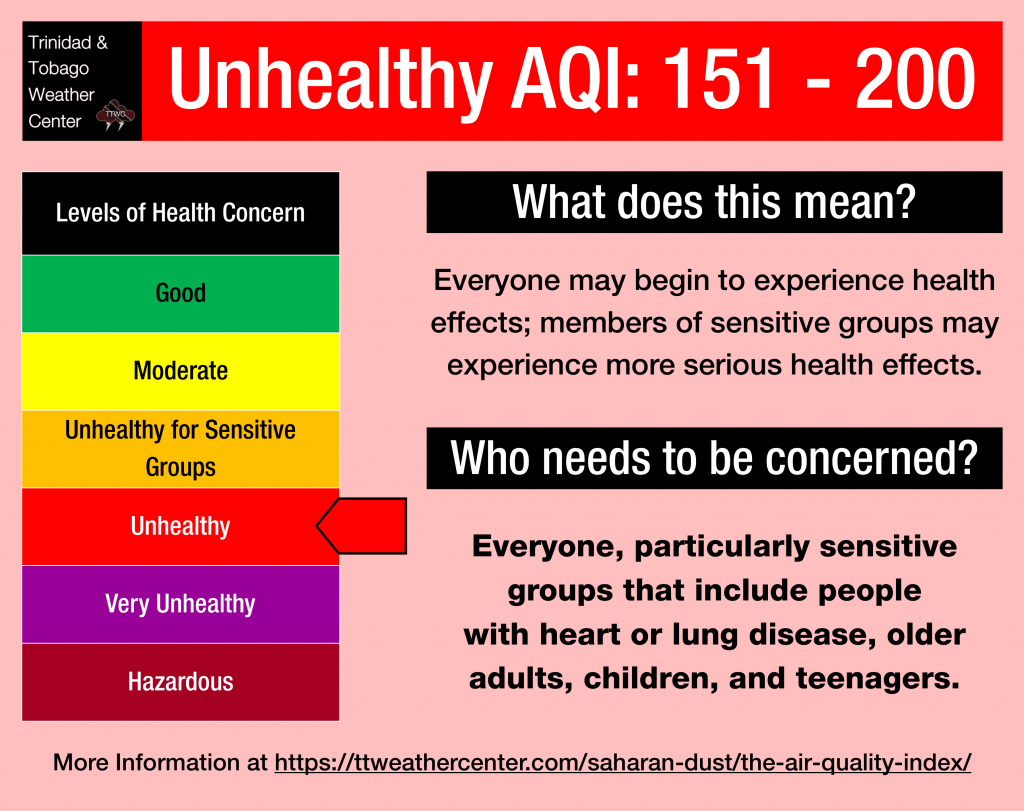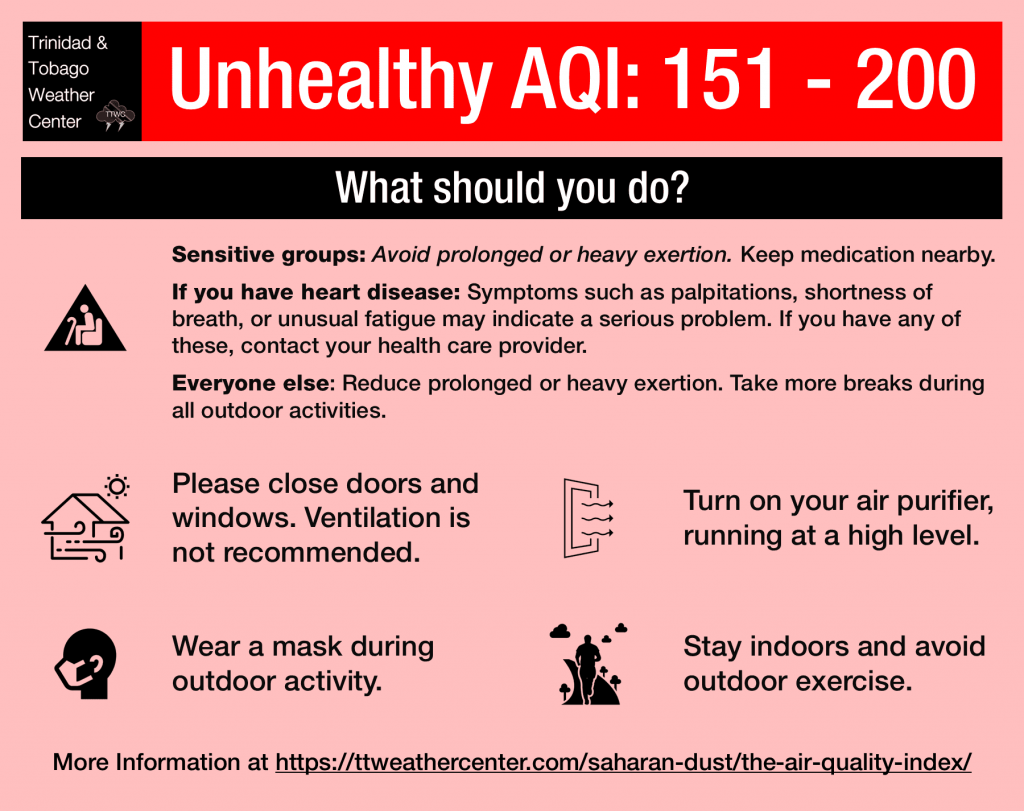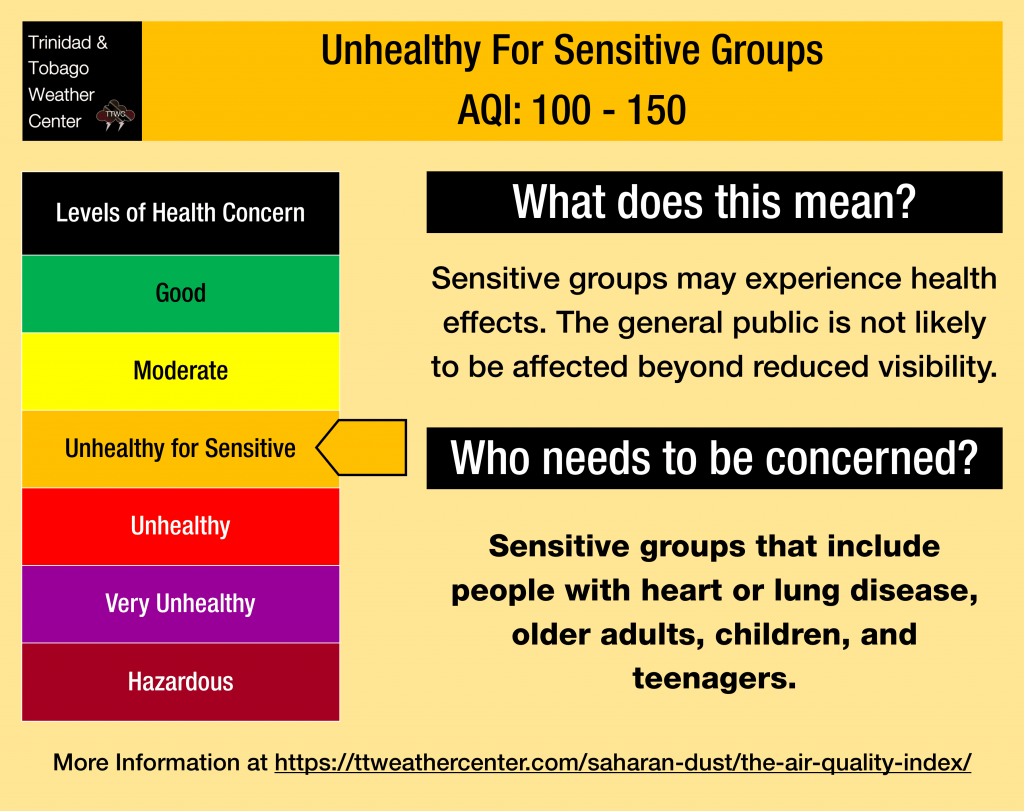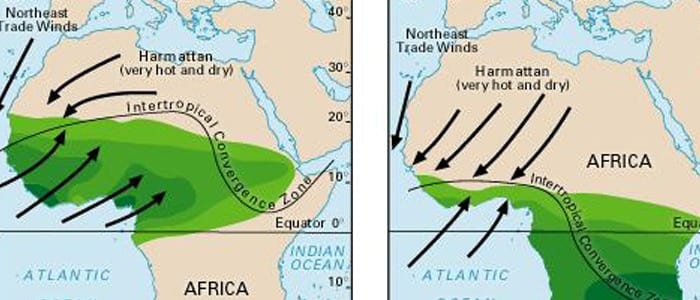A mild to moderate surge of Saharan Dust is forecast to move across Trinidad and Tobago into the weekend, with localized air quality further reduced by fires, blowing smoke
What you need to know
— Saharan Dust Surges: Two mild to moderate surges of Saharan Dust are forecast to arrive across T&T from tomorrow, Saturday, March 16th, 2024, and another approaching by the end of the month.
— Impacts: Air quality across T&T will range between good and moderate, with further localized reduction in air quality levels near fires through the forecast period. However, from March 16th through March 21st, air quality is forecast to reduce to moderate, occasionally reaching levels that are unhealthy for sensitive groups.
— What Should You Do: In times of unhealthy air quality, everyone should take the necessary precautions. Throughout the forecast period, unusually sensitive groups are advised to take the necessary precautions, particularly during high traffic and in the vicinity of fires.
Current AQI Levels Across T&T

The official air quality monitoring stations from the Environmental Management Agency (EMA) at Mayaro, Arima, Beetham, and Scarborough are all reporting good levels, while at Toco and Point Lisas, moderate air quality is being recorded as of Friday afternoon.
Unofficial air quality monitoring stations at Longdenville, St. Augustine, and Woodbrook report good to moderate air quality.
These measurements are based on PM2.5 (particulates the size of 2.5 micrometers and smaller, usually associated with increases in Saharan Dust, vehicle exhaust, and smoke) and PM10 particulates.
Over the last 24 hours, visibility has remained at 10 kilometers at the A.N.R. Robinson International Airport at Crown Point, Tobago, and the Piarco International Airport, Trinidad.
Saharan Dust Forecast

Saturday (Mar 16th) through mid-Thursday (Mar 21st): Mild to moderate concentrations of Saharan Dust, with increased low-level winds also leading to blowing dust and increasing the risk of fires. Air quality: moderate to unhealthy for sensitive groups, dipping to/below unhealthy in high traffic and near fires/blowing smoke.
Mid-Thursday (Mar 21st) through Monday (Mar 25th): Little to no Saharan Dust present. However, blowing smoke from fires may affect air quality and visibility. Air quality: good to moderate, occasionally unhealthy for sensitive groups in high traffic and near fires/blowing smoke. Note that pollen may also aggravate allergies and those sensitive to air quality changes.
What does this mean for you?


In areas where blowing smoke occurs, or near fires, air quality may dip to unhealthy levels (or below). Everyone may begin to experience health effects, and members of sensitive groups may experience more serious health effects.


From March 16th, air quality is forecast to reach generally moderate to unhealthy for sensitive groups. With elevated concentrations present and drier and breezier conditions bringing the risk of fires, air quality is still forecast to be reduced, with further reductions in localized areas of fires, blowing smoke and dust, and high traffic.


During this period, a ridge of high pressure stays over the central Sahara Desert, and the Intertropical Convergence Zone (ITCZ) remains over the Gulf of Guinea. The Harmattan wind accelerates when it blows across the mountain massifs of Northwest Africa. If its speed is high enough and it blows over dust source regions, it lifts the dust and disperses it.
The surges of dust during this time of year are due to the Harmattan, a season in the West African subcontinent that occurs between the end of November and the middle of March. During this season, a predominant northeasterly trade wind (dubbed the Harmattan Winds) blows from the Sahara Desert over Western Africa into the Gulf of Guinea.

Dust that makes it into the upper levels of the atmosphere can then get transported across the Atlantic Ocean and affect the Eastern Caribbean. These Saharan Dust outbreaks tend to be milder in the Eastern Caribbean than the dust outbreaks.











